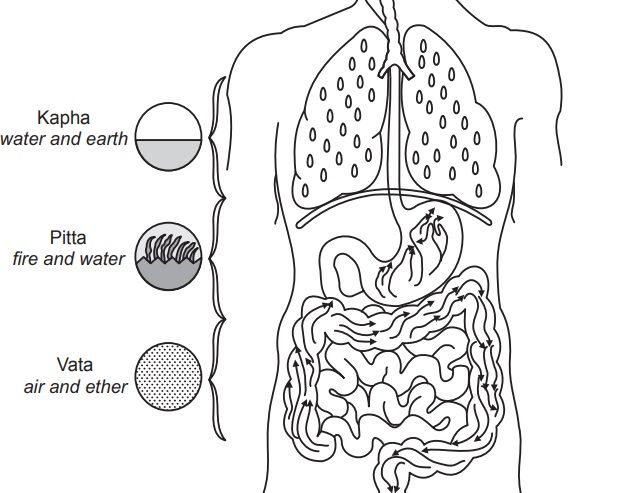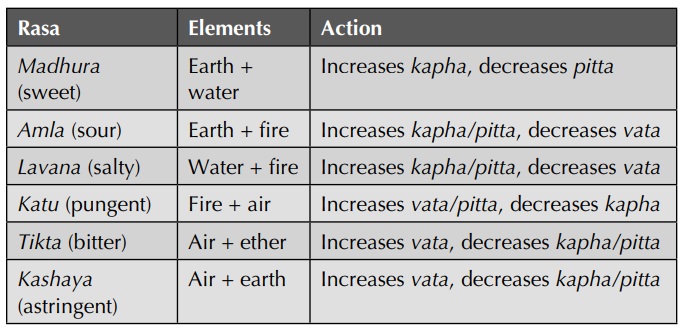Indian Systems of Medicine
| Home | | Pharmacognosy |Chapter: Pharmacognosy and Phytochemistry : Alternative System of Medicine
The WHO estimates that about 80% of the populations living in the developing countries rely exclusively on tra-ditional medicine for their primary health care needs.
INDIAN SYSTEMS OF MEDICINE
The WHO estimates that about 80% of the populations living
in the developing countries rely exclusively on traditional medicine for their
primary health care needs. India has an ancient heritage of traditional
medicine. Indian traditional medicine is based on different systems including Ayurveda, Siddha and Unani. With
the emerging interest in the world to
adopt and study the traditional system and to exploit their potentials based on
different health care systems, the evaluation of the rich heritage of the
traditional medicine is essential.
Almost in all the traditional medicines, the medicinal
plants play a crucial role in the traditional medicine. India has a rich
heritage of traditional medicine and the traditional health care system have
been flourishing for many centuries.
In India, the Ayurvedic system of medicine developed an
extensive use of medicines from plants dating from at least 1000 B.C. Western
medicine continues to show the influence of ancient practices. For example,
cardiac glycosides from Digitalis
purpurea, morphine from Papaver somniferum, reserpine from Rauwolfia species, and quinine from Cinchona species and artemisinin, an active antimalarial compound
from Artemisia annua, etc., show the
influence of traditional medicine in Western medicine.
Ayurveda—The Indian System of Medicine
Ayurvedic system of medicine is accepted as the oldest
written medical system that is also supposed to be more effective in certain
cases than modern therapies. The origin of Ayurveda has been lost in
prehistoric antiquity, but their concepts were nurtured between 2500 and 500
B.C. in India.
Ayurveda is accepted to be the oldest medical system, which
came into existence in about 900 B.C. The word Ayurveda means Ayur meaning life and Veda meaning science. Thus, Ayurveda
literally means science of life. The Indian Hindu mythology states four Veda
written by the Aryans: Rig Veda, Sam Veda, Yajur Veda and Atharva
Veda. The Ayurveda is said to be an Upaveda
(part) of Atharva Veda. Charaka Samhita (1900 B.C.) is the first
recorded book with the concept of practice of Ayurveda. This describes 341
plants and plant products used in medicine. Sushruta
Samhita (600 B.C.) was the next
ayurvedic literature that has special
emphasis on surgery. It described 395 medicinal plants, 57 drugs of animal
origin, 4 minerals and metals as therapeutic agents.
Basic
principles of ayurveda
According to ancient Indian philosophy, the universe is
composed of five basic elements or pancha
bhutas: prithvi (earth), jal (water), teja (fire), vayu (air)
and akash (space). Everything in the
universe, including food and the bodies were derived from these bhutas. A fundamental harmony therefore
exists between the macrocosm (the universe) and the microcosm (the individual).
The Pancha Bhuta theory and the human
body: The human body is in a state of continuous flux or dynamic equilibrium.
The pancha bhutas are represented in the human body as the doshas, dhatus and malas.
There are three doshas
in the body. They are vata, pitta and kapha. There are direct equivalents for these three doshas, known as tridoshas.
However, the factors responsible for movement and sensation in a single
cell/whole body are the representatives of vata;
it explains the entire biological phenomena that are controlled by the
functions of central and autonomous nervous system. The factors responsible for
digestion, metabolism, tissue building, heat production, blood pigmentation,
activities of the endocrine glands and energy are the representatives of pitta. The factors respon-sible for
strengthening the stomach and the joints, providing firmness to the limbs, and
refreshing the sense organs are the representatives of kapha. There are some special areas in the body in which each dosha predominates, namely, the chest
for kapha, digestive organs for pitta and the large intestine for vata.

The dhatus are the
body constituents and form the basic structure of the body; each one having its
own functions. The dhatus are seven
in number: rasa (food juices), rakta (haemoglobin portion of the
blood), mamsa (muscle tissue), medas (fat tissue), asthi (bone tissue), majja (bone
marrow) and shukra (semen).
Malas are the by-products of the dhatus, partly used by the body and partly excreted as waste
matter after the process of digestion is over. These play a supporting role
while they are in the body, and when they are eliminated, their supporting role
is finished. The useful elements absorbed by the body are retained as prasad (useful matter), while those
excreted are known as malas (waste
matter). The chief malas are mutra (urine), shakrit (faeces) and sweda (perspira-tion).
The doshas, dhatus and malas should be in a state of perfect
equilibrium for the body to remain healthy. Any imbalance among these
constituents results in ill health and disease.
Diagnosis
Diagnosis in Ayurveda implies a moment-to-moment moni-toring
of the interaction between order (health) and disorder (disease). The disease
process is a reaction between the bodily humours
(doshas) and tissues (dhatus) and is influenced by the
environment.
The classical clinical examination in Ayurveda is called ashta sthana pariksha (eight-point
diagnosis) and includes an assessment
of the state of the doshas as well as
various physical signs. The eight-point diagnoses are nadi pariksha (pulse diagnosis), mutra pariksha (urine examination), vata/ sparsha (Nervous
system assessment), Pitta/drik (assessment of digestive fire and metabolic
secretions), kapha/akriti (mucous and
mucoid secretions assessment), mala
pariksha (stool examination), jihva
pariksha (tongue examination) and shabda
pariksha (examination of body sounds).
Treatment
In Ayurveda, before starting the treatment, a person’s
constitutional type should be determined. Drugs are prescribed based on the
patient’s body type as well as on what disease or disturbance of the doshas they are suffering from.
Everything that might affect the patient’s health, including their activities,
the time of the day, and the season should be taken into consideration. In
other words, patients are looked at as individuals as well as in relation to
their environment. Ayurvedic treatment attempts to establish a balance among
the bodily humours of vata, pitta and kapha, as well as to improve digestion and elimination of ama (undigested food).
Ayurvedic therapy often begins with shodhana (cleansing) in which toxins, emotional or physical, are
eliminated or neutralized. Once shodhana
is completed, shamana (palliative
treatment) is used to reduce the intensity of a disease and balance the
disordered doshas. Finally, rasayana (rejuvenation therapy) is used
to maintain health and reduce the negative effects of disease.
In Ayurveda, vegetable, animal, mineral substances or metals
could be used for their healing effects. The metals mentioned as drugs were
gold, silver, copper, lead, tin and iron. Along with these substances elements
from the earth, like arsenic, antimony, sand and lime, were also used. Earlier,
600 medicinal plants were recorded in Ayurveda, and it has increased to more
than 1200 medicinal plants.
Properties
of herbs
Ayurvedic herbs are described and classified according to
five major properties: rasa (taste), guna (physicochemical properties), veerya (potency), vipaka (postdigestive effect) and prabhava (unique effect of the drug). As the digestive process
begins, the food or drug is acted upon by the agnis (various digestive juices) and enzymes.
Rasa is divided into six major types: madhura (sweet), amla (sour), lavana (salty), katu (pungent), tikta (bitter),
and kashaya (astringent). Each taste
is made up of a combination of two of
the five basic elements (earth, water, fire, air and ether). Each taste has
their own effects on the three bodily doshas
(vata, pitta and kapha).

Guna represents the physical aspects of a
medicinal sub-stance. There are five major classes of guna, and each class corresponds to one of the major elements (mahabhutas): unctuousness corresponds
with water; heaviness with earth; keenness and sharpness with fire; dryness
with air; and light with ether. Gunas
are generally considered in pairs: cold/ hot, wet/dry, soft/hard and
stable/unstable, etc.
Veerya represents the active principle or
potency of a drug. The two divisions
are sita veerya (indicates kapha varag) and ushna veerya (indicates pitta
varag); vata remains buffer.
Vipaka is the quality a substance takes on
after it has been acted on by the
body (after digestion). The three types of vipaka
are madhura (increases kapha), sour (increases pitta) and katu (increases vata). The type of food responsible for madhura, sour and katu are carbohydrates, proteins and fats, respectively.
Prabhava is the activity or influence of a
drug in the body. The drugs may have
the same rasa, guna, veerya and vipaka but the prabhava may be different due to the chemical composition.
Branches
of ayurveda
Ayurveda maintains that there is a definite relationship
between illness and the metaphysical state of an individual. Its approach to
medical treatment is to focus on the person rather than the disease.
Ayurveda has eight branches: Kaya Chikitsa (Medicine), Salya
Chikitsa (Surgery), Salakya Chikitsa (ENT
treatment), Bala Chikitsa (Paediatric
treatment), Jara Chikitsa (treatment related to genetics), Rasayana Chikitsa (treatment with
chemicals), Vajikarama Chikitsa
(treatment with rejuvenation and aphrodisiacs), Graham Chikitsa (planetary effects) and Visha Chikitsa (toxicology).
Tibetan system of medicine which is the main stay of the
majority of Tibetan people not only in India, but in neighbouring countries too
was developed out of Ayurveda, or was influenced by it. Researches in
traditional medicine have confirmed the efficacy of most of the natural
sub-stances used by the practitioners of Ayurveda. The principle, treatment and
philosophy of Ayurveda are one of the best systems that fulfill the needs of
human beings. It has so many good prescriptions without many side effects.
Thus, Ayurveda formulates the holistic approach of treatment by subjecting the
body as a whole giving least importance to rogabalam.
This may be the reason for time-consuming treatment in Ayurveda, but the
results last long.
Related Topics
